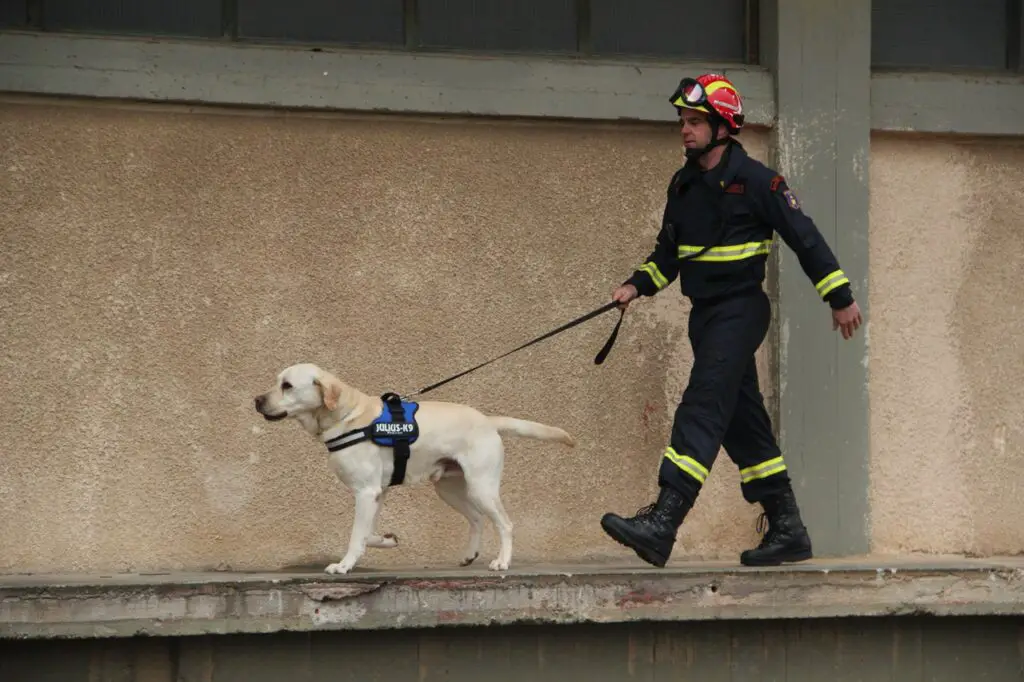In my experience, one of the key aspects of nocturnal puppy potty training is understanding the frequency of nighttime potty breaks. Puppies have small bladders and may need to relieve themselves multiple times throughout the night. It is important to be prepared for this and set a schedule allowing regular potty breaks.
- Key Takeaways
- Waking Up Puppy For Nighttime Potty: Factors to Consider
- Importance and Frequency
- Sleep Duration and Potty Breaks
- Carrying and Waiting Time
- Individual Choices and Disclaimers
- Frequently Asked Questions
- What effective ways to gently wake a puppy for a nighttime potty break?
- How can I minimize my puppy's distractions during nighttime potty trips to ensure they go back to sleep quickly?
- What are some signs that my puppy is getting better at holding their bladder overnight?
- How can I help my puppy feel comfortable and secure during nighttime potty breaks?
- Are there any specific breeds that typically have more difficulty with nighttime potty training?
- Conclusion
Key Takeaways
- Waking up a puppy at night to pee helps prevent potty accidents and soiling their sleeping space.
- The frequency of waking a puppy to pee at night should be adjusted based on the puppy’s needs and natural cycle.
- Puppies can sleep for 2-3 hours at a time and gradually increase the duration as they age.
- The number of potty breaks needed for an 8-week-old puppy at night maybe 2-3 or even 4, but this can be adjusted as the puppy develops and receives training.
Waking Up Puppy For Nighttime Potty: Factors to Consider
A factor is the correlation between sleep duration and nighttime potty breaks. Puppies, like humans, need sufficient sleep to grow and develop properly. However, this means they may need to wake up in the middle of the night to go potty. It can be tempting to let them sleep through the night, but it is important to prioritize their bathroom needs.
When it comes to waking up the puppy for a nighttime potty break, I have found that carrying them outside is the most effective method. This helps to prevent accidents inside the house and reinforces the association between going potty and being outside. The puppy may take some time to get used to being carried, but they will soon understand the routine with patience and consistency.
Managing these nighttime activities requires consistency and calmness. It is important to establish a routine and stick to it every night. This helps the puppy understand what is expected of them and reduces confusion. Remaining calm during the process also helps create a positive and stress-free environment for the puppy and the owner.
It is important to note that the methods discussed in this article are based on personal experience and are not intended as a substitute for professional veterinary advice. Every puppy is different, and what works for one may not work for another. It is always best to consult a veterinarian if you have any concerns or questions about your puppy’s nighttime potty training.
Effectively managing a puppy’s nighttime bathroom needs is crucial for their well-being. By understanding the frequency of nighttime potty breaks, the correlation between sleep duration and these breaks, and the choice of carrying the puppy outside, owners can develop a practical strategy for potty training. Consistency and calmness are key in this process, and it is important to remember that every puppy is unique. Owners can ensure a smooth and stress-free potty training experience for their furry friends with dedication and patience.

Importance and Frequency
The necessity of waking a puppy to pee at night is underscored by its role in preventing potty accidents, maintaining the cleanliness of sleeping spaces, and facilitating crate training.
Potty training methods must be consistent, with an initial frequency of 2-3 potty breaks at night. However, this routine might present challenges with nighttime potty training as it could disrupt the puppy’s sleep-wake cycle and lead to difficulty resuming sleep.
Therefore, adjusting this schedule based on the puppy’s unique needs, water intake, previous potty training, and natural sleep-wake cycle is crucial.
This approach balances the puppy’s comfort and health with the goal of successful potty training, emphasizing the importance of understanding individual puppy behavior and needs.
Sleep Duration and Potty Breaks
During the first few weeks, it is critical to plan for at least 2-3 breaks for urination to prevent accidents. This strategy aids in crate training and helps maintain a clean sleeping space.
Some puppies possess stronger instincts to avoid soiling their sleeping spot, so this routine supports these natural tendencies.
Factors affecting sleep duration, such as breed, water intake, and sleep quality, must be considered when determining the number of nighttime potty breaks.
As puppies mature, their ability to hold it in for longer periods improves, allowing for fewer disruptions in their sleep cycle.
With proper attention to these factors and the importance of consistency in potty training, puppies can gradually extend their nighttime sleep duration, leading to fewer accidents and a harmonious living environment.

Carrying and Waiting Time
Optimal strategies for transporting a young canine to the designated elimination area and determining the appropriate waiting time are crucial in housebreaking. While carrying a puppy to the spot can minimize distractions and maintain their sleepy state, walking them on a leash may fully awaken them, leading to potential excitement and distractions. Various factors, such as the size of the breed and the presence of stairs, should be considered when choosing between carrying and walking for nighttime potty breaks.
Regarding the optimal waiting time for a puppy to pee at night, it is generally recommended to allow at least 10-15 minutes. However, this can be adjusted based on puppy needs and potty training progress.
- The patience required during these nighttime routines can stir a sense of empathy and compassion in the caregivers.
- These experiences testify to the commitment and dedication to caring for a young life.
- The gradual progress and eventual success in housebreaking can evoke accomplishment and satisfaction.

Individual Choices and Disclaimers
Individual decisions play a crucial role in housebreaking, with the choice between rousing the young canine for toilet breaks, allowing them to sleep, or physically moving them to the designated area largely dependent on personal preference and the animal’s needs.
The number of breaks may range from two to four, based on the puppy’s physiological development and training progress. Comfortable but unsuitable choices might prolong the potty training phase; thus, consistency and calmness are essential for success.
| Factors | Options | Impact |
|---|---|---|
| Puppy’s Needs | 2-4 breaks | Depends on training progress |
| Personal Preferences | Wake, sleep, or carry | Can lengthen potty training |
| Veterinary Attention | Needed in case of illness | Ensures puppy’s overall health |
The role of veterinary attention in puppy care cannot be overstated, and any symptoms of illness should warrant an immediate visit.

Frequently Asked Questions
Conclusion
In conclusion, waking a puppy for nighttime bathroom breaks is significant for successful crate training and accident prevention.
The frequency of these breaks may vary, but consistency and calmness are paramount.
Utilizing methods such as carrying the puppy to the designated area and allowing ample time for relief is suggested.
Though based on personal experiences, these strategies should be considered supplementary to professional veterinary advice.

